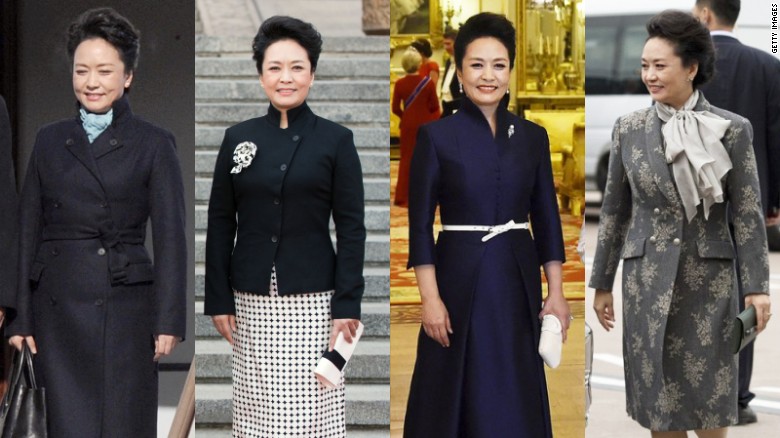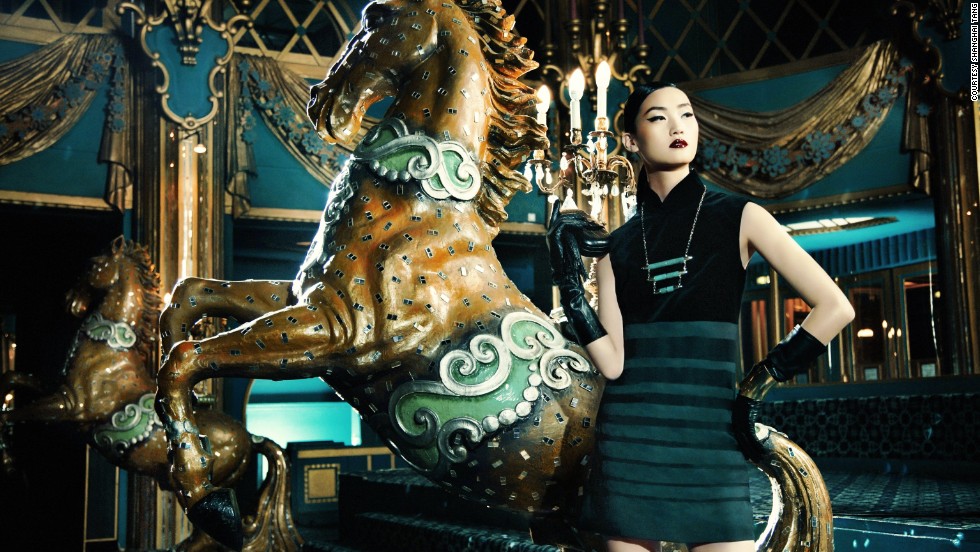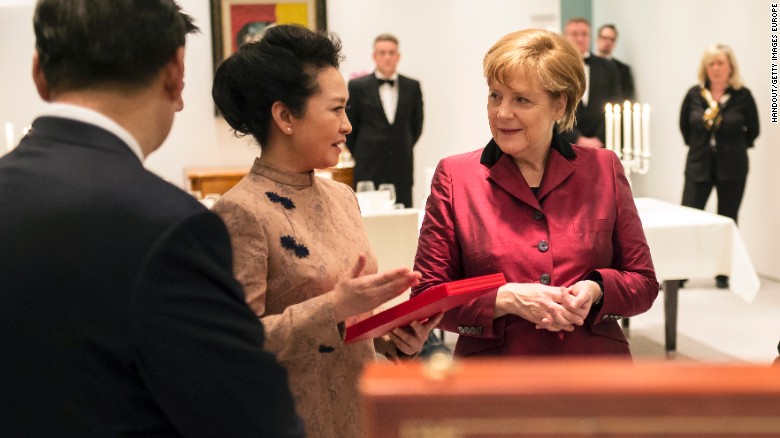Blackstone
Brigadier
This is the kind of things I love seeing; Chinese culture, language, philosophy, history, art, fashion, literature, myths, legends, stories, and the list goes on and on, presented globally in comfortable, understandable, relatable, and elegant manners.
Beijing (CNN)Chinese couturier Ma Ke is a media-shy fashion-world maverick.
She's built two of China's most influential designer brands and dresses the country's first lady, Peng Liyuan -- but doesn't consider herself a designer.
Preferring a reclusive life in Zhuhai, a city on China's southern coast that's a world away from the country's fashion hubs in Shanghai and Beijing, Ma never reads fashion magazines, shuns parties and rarely gives interviews.
For this exclusive, CNN wasn't allowed to take photos at the opening of her new exhibition, nor did she want to supply a head shot. "I don't belong in fashion circles," she says.
First lady of fashion

China's first lady Peng Liyuan in outfits designed by Ma Ke
Ma may shun media attention, but her fashion success speaks volumes in itself.
Hugely influential in China's fashion world for her brands Wuyong and Exception de Mixmind, the designer became a household name when China's first lady wore one of her designs on her first official overseas trip in 2013.
The double-breasted dark navy trench coat she chose, paired with a light turquoise silk scarf, set Chinese social media alight. Peng's unfussy, structured and elegant looks also received rave reviews abroad -- list that year.
To many, Peng's strong look broke the mold of the usually subdued fashion choices made by China's first ladies of the past.
"It fits her well, as she is a soldier and she has a kind of assertiveness and toughness," Ma tells CNN of the now-famous trench coat, the first time she's confirmed which outfits she's designed for Peng.
Ma has known China's first lady since 2002, and through her designs, she says she wants to convey the inner confidence of modern Chinese women.
"You know sometimes clothing can come across aggressive when it's too revealing and eye-catching and it's the opposite of traditional Chinese aesthetics," she says. "Women don't need to use clothing as a weapon if they're confident in their character and cultivation."
It's ensured Peng, who was a famous folk singer before becoming first lady, is compared to fashion icons like Kate Middleton and Michelle Obama, both of whom have helped emerging designers become stars. "My philosophy for the first lady's designs is elegance, subtlety and demureness," Ma adds.
Chinese style isn't what you think
It's a philosophy that Ma has drawn from her deep appreciation of traditional Chinese design.
While many regard the form-fitting cheongsam or qipao as epitomizing Chinese style, Ma, who reads Chinese classics extensively, says the opposite is true.

Photos:
Cheongsam story – From its turn as a 1920s feminist statement to modern incarnations, the Hong Kong Museum of History's "" celebrates the iconic dress. This contemporary version (not featured in the exhibit) is from Hong Kong fashion brand Shanghai Tang.
"In Western values, women are beautiful if they are sexy. Chinese design is more concealing." "Like the traditional Chinese ink painting, the blank space between fabric and skin is where the beauty resides," she says.
Ma also draws on tradition for her couture designs for her Wuyong brand, employing techniques such as loom weaving, hand-sewing and natural coloring.
Her unusual textures, architectural shapes and earthy colors led to her becoming the first Chinese designer to be invited by one of high fashion's most respected bodies, , to show at Paris Haute Couture week in 2008.

It's a theme she's also exploring further with her latest venture, an exhibition she has curated and installed in her Beijing Wuyong showroom called "In search of the clothes with the best stories."
Ma says she wants to highlight traditional Chinese design with her exhibition, and support the people who produce handcrafted products in China's rural areas. "I went to the rural areas many times to study traditional clothes making techniques and I was impressed. I decided to help rejuvenate the traditional craftsmanship," she says. "Clothes crafted with care and love last longer," she adds. "If we don't seize the time, we'll lose lots of previous cultural heritage."
"In search of the clothes with the best stories" runs from October 29, 2016 to April 15, 2017 at Wuyong Space, 77 Meishuguan Back St, Dongcheng District, Beijing, China.
